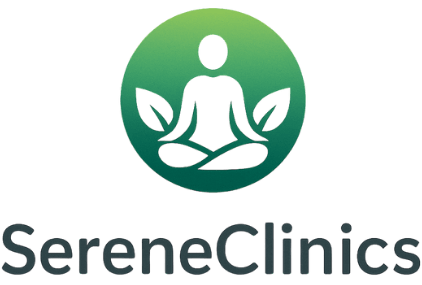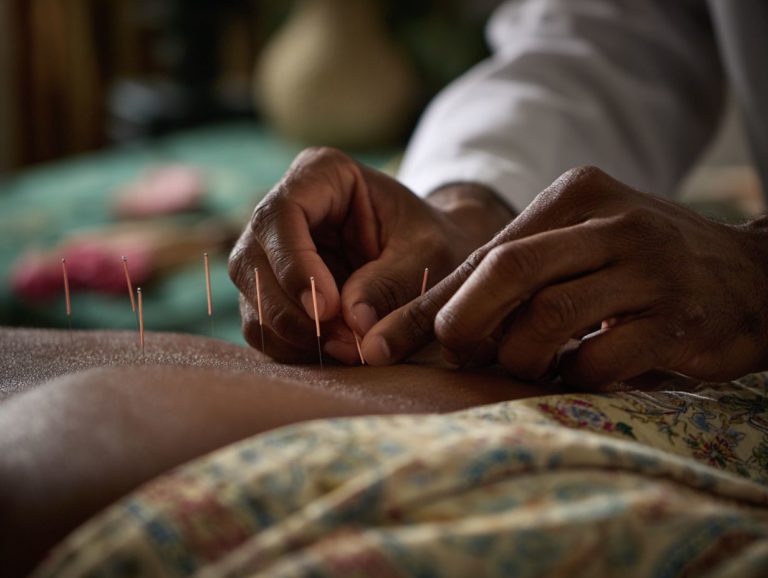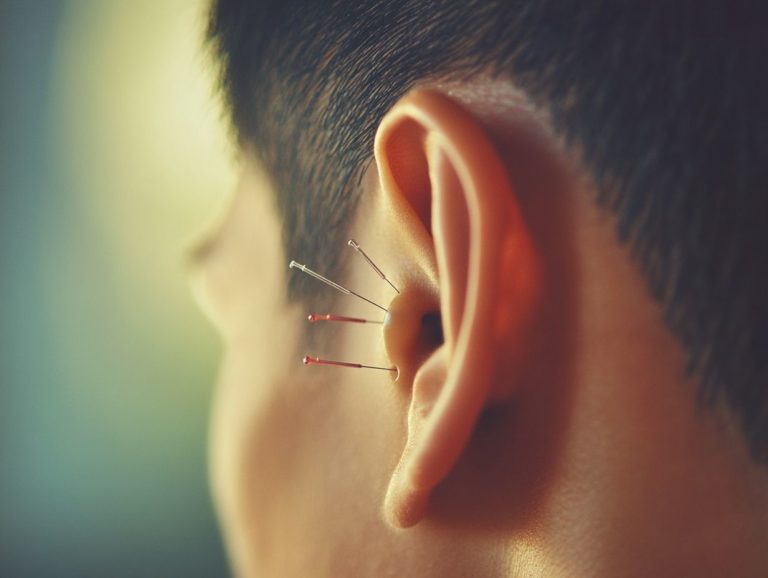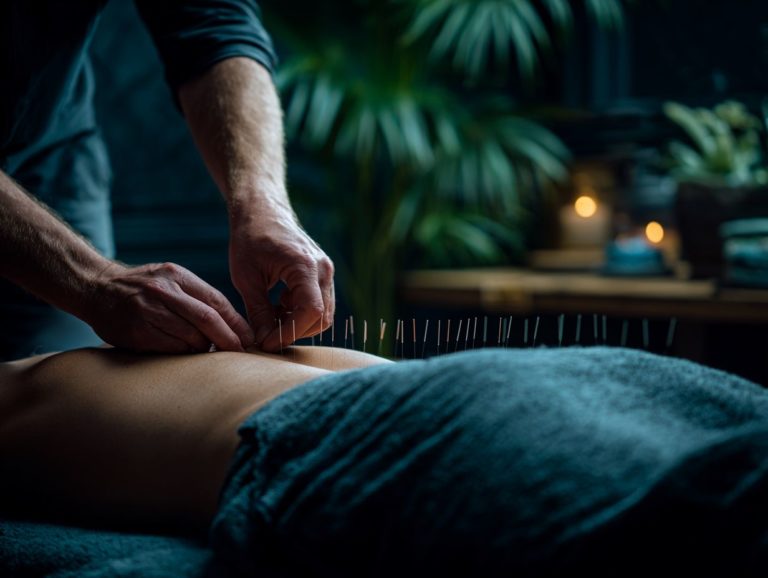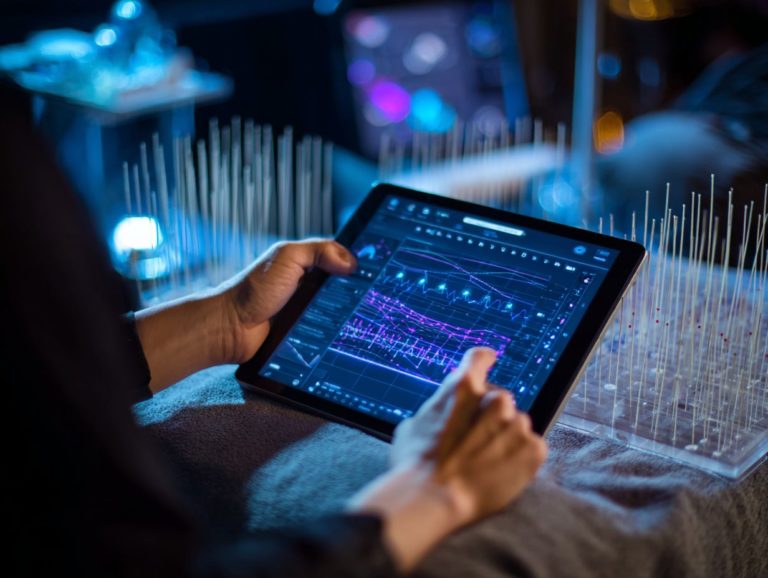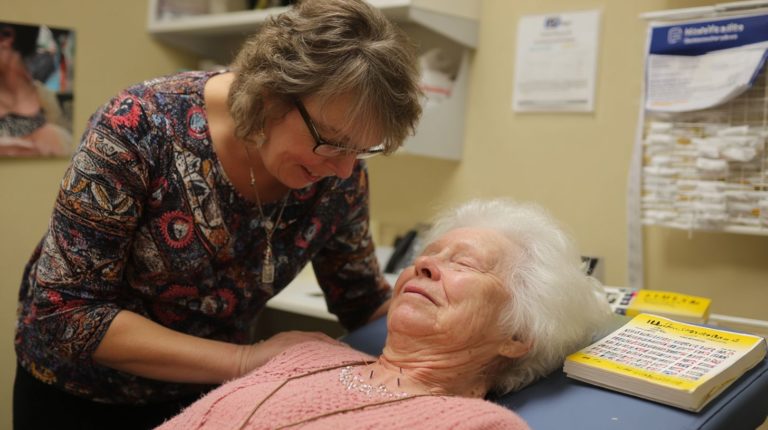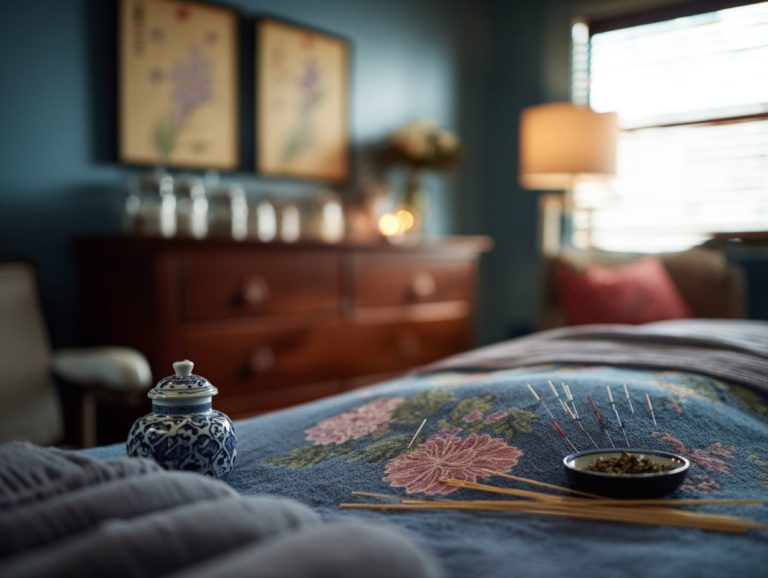Role of Physicians in Acupuncture: Practices
Introduction to Physicians’ Role in Acupuncture Practices A doctor combines traditional acupuncture needles with modern medical treatment-that shows how acupuncture is gaining ground in American medicine. Backed by the World Health Organization and National Institutes of Health, this practice gained Western traction after journalist James Reston’s 1971 China trip. See how doctors handle training, regulations, and practical methods to reduce pain and improve health, leading to safer, complete care for patients.
Key Takeaways:
Contents
- 1 Physician Acupuncturists in the US: Key Statistics
- 2 Historical Background
- 3 Training and Certification Requirements
- 4 Integration into Conventional Medical Practice
- 5 Patient Assessment and Diagnosis
- 6 Treatment Techniques Employed by Physicians
- 7 Safety Protocols and Risk Management
- 8 Ethical and Legal Considerations
- 9 Frequently Asked Questions
- 9.1 What is the primary role of physicians in acupuncture practices?
- 9.2 Can physicians legally perform acupuncture as part of their practices?
- 9.3 How do doctors use acupuncture in their regular medical work?
- 9.4 What training is required for physicians to engage in acupuncture practices?
- 9.5 What are the benefits of physician oversight in acupuncture practices?
- 9.6 How does the role of physicians in acupuncture practices differ from that of licensed acupuncturists?
Definition and Scope of Acupuncture in Modern Medicine
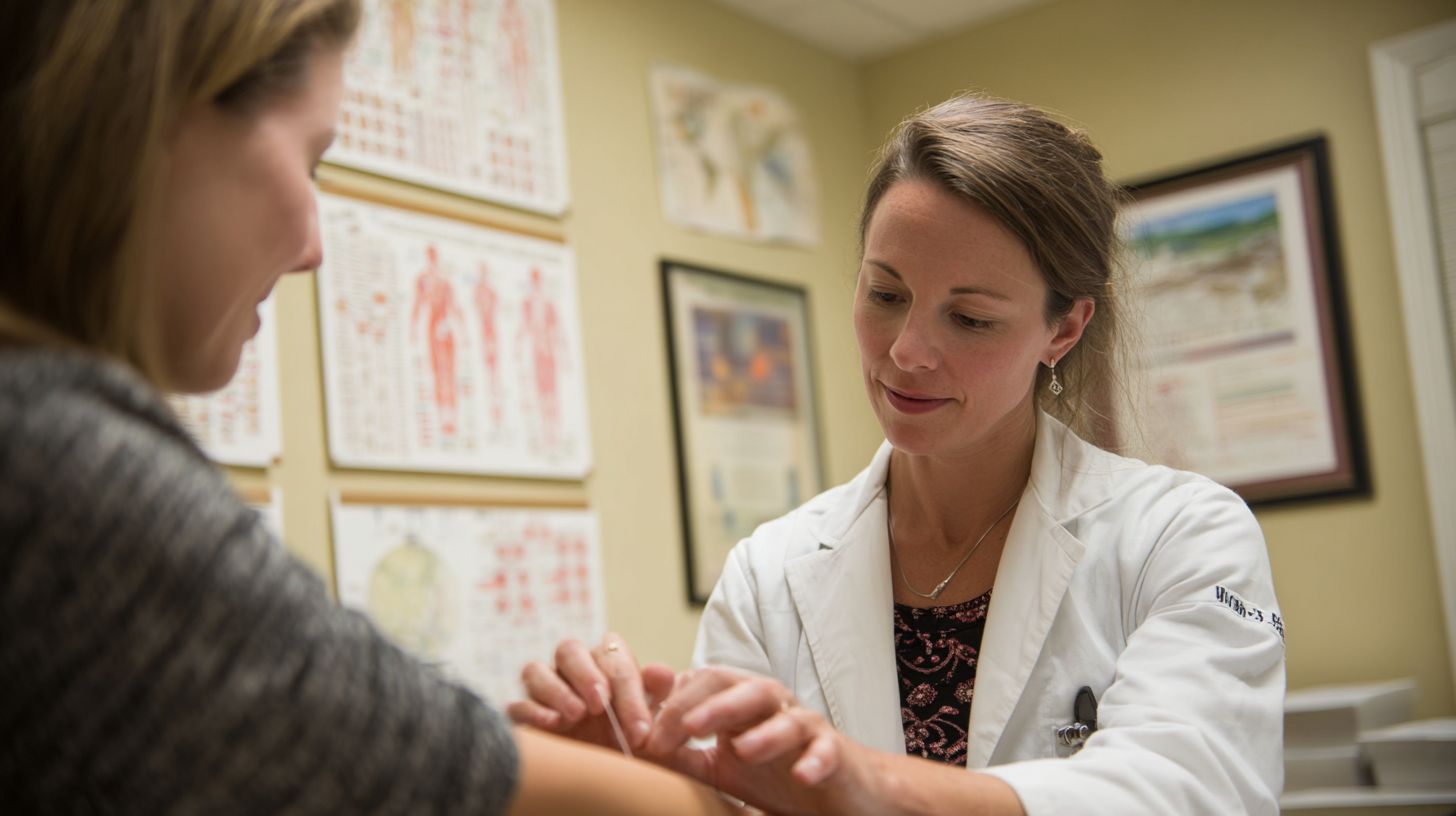
Acupuncture, which the World Health Organization recognizes for treating 28 conditions including chronic pain and postoperative nausea, involves inserting needles into specific body points to balance energy flow within modern medical scope.
According to NIH guidelines, it acts as a complementary treatment for pain relief, supported by solid evidence- particularly as an opioid alternative for chronic pain.
For chronic low back pain, a 2017 NIH-funded study in the Journal of Pain reported effectiveness in 70% of participants, significantly reducing symptoms and enhancing mobility through 8-12 weekly sessions targeting points like BL23 and GV4.
Clinical trials, including those from the Cochrane Database, demonstrate a 50% reduction in postoperative pain intensity within 24 hours, often using auricular acupuncture. The WHO’s 2003 consensus statement endorses these applications with moderate-to-strong evidence levels, advising integration with conventional care.
To start, consult NCCAOM-certified practitioners for personalized protocols.
Evolution of Physicians’ Involvement
Physician involvement in acupuncture surged after the 1971 Nixon visit to China, with a 2007 survey showing 37% of US MDs referring patients compared to just 10% in 1997.
This growth unfolded through key milestones. In the 1970s, adoption accelerated following James Reston’s 1971 New York Times article detailing acupuncture’s role in his postoperative pain relief, inspiring early MD explorations.
The 1990s saw integration via UCLA School of Medicine’s training programs, equipping physicians with certification paths. By the 2000s, AAMA data reported a 50% rise in licensed acupuncturists collaborating with MDs.
For instance, University of Washington clinics now integrate acupuncture into pain management, reducing opioid use by 30% per a 2018 study.
People already working as practitioners can use this method by taking AAMA-accredited courses and working with licensed acupuncturists to provide full patient care.
Physician Acupuncturists in the US: Key Statistics
Physician Acupuncturists in the US: Key Statistics
Acupuncturist Demographics: Proportion of Acupuncturists Who Are Physicians
Acupuncturist Demographics: Survey Response Data
The Physician Acupuncturists in the US: Key Statistics offer a snapshot of how medical doctors are integrating acupuncture into their practices, reflecting the growing acceptance of complementary and alternative medicine (CAM) within conventional healthcare. This data underscores the expanding role of acupuncture in treating conditions like chronic pain, stress, and nausea, often as an adjunct to Western medical approaches.
Acupuncturist Demographics reveal that approximately 33% of acupuncturists in the US are physicians (MDs), based on an estimated total of 10,000 acupuncturists nationwide. This suggests around 3,333 physician acupuncturists, highlighting a significant crossover between traditional Chinese medicine and allopathic training. Many medical doctors get acupuncture certification to improve patient care. Studies show it works well in settings that combine different medical treatments. This proportion indicates a maturing field where physicians value acupuncture’s non-invasive benefits, potentially improving outcomes and reducing reliance on pharmaceuticals.
- Implications for Healthcare: With one-third of practitioners holding MD credentials, it points to increased legitimacy and accessibility. Patients get better results from doctors who use acupuncture alongside tests like scans or blood work to build full treatment plans.
- Growth Factors: Rising demand, supported by organizations like the American Academy of Medical Acupuncture, encourages more physicians to specialize, addressing shortages in pain management amid the opioid crisis.
Survey Response Data from a targeted study provides context on engagement levels: 464 questionnaires were mailed to physicians, yielding 137 responses for a 30% response rate. The high participation rate confirms the survey’s trustworthiness. It provides details on obstacles to adoption, training outcomes, and how it fits into everyday work. A 30% response is typical for physician surveys, where time constraints can limit replies, yet it captures diverse perspectives from urban and rural practitioners.
Overall, these statistics illustrate acupuncture’s integration into US medicine, with physician involvement enhancing credibility and patient trust. As awareness grows, expect further increases in MD acupuncturists, potentially influencing policy and insurance coverage for CAM therapies.
Historical Background
Acupuncture dates back more than 2,500 years. It started as old Chinese practices and became an accepted treatment that Western doctors use, beginning in the middle of the 1900s.
Traditional Chinese Medicine Foundations
Rooted in Traditional Chinese Medicine since 100 BCE, acupuncture targets 12 main meridians to regulate qi, as documented in the Huangdi Neijing text endorsed by WHO for its foundational principles.
These 12 meridians-
- lung,
- large intestine,
- stomach,
- spleen,
- heart,
- small intestine,
- bladder,
- kidney,
- pericardium,
- triple burner,
- gallbladder, and
- liver-
connects to 365 acupuncture points, so you can balance yin and yang properly to bring back harmony.
The WHO’s 1997 Traditional Medicine Strategy calls for combining TCM with modern healthcare to provide full health benefits.
For actionable application, physicians can draw from ancient texts like the Huangdi Neijing, where stimulating the Pericardium 6 (Neiguan) point on the forearm meridian alleviates nausea by unblocking stomach qi-complementing Western antiemetics without overlap, via tools like pulse diagnosis for identifying imbalances.
Western Adoption by Physicians
Western physicians adopted acupuncture following James Reston’s 1971 New York Times report on its efficacy for postoperative pain during Nixon’s China visit, sparking US clinical trials by 1973.
This momentum built through key physician-focused milestones. In the 1970s, NIH-funded studies at Montreal General Hospital validated acupuncture for pain relief, with trials showing significant reductions in postoperative discomfort.
The 1980s marked the 1980 formation of the American Academy of Medical Acupuncture (AAMA), offering MD training programs to integrate it into Western practice. In the 1990s, the FDA’s 1996 decision to classify acupuncture needles as Class II medical devices increased their credibility.
This aligns with findings from the National Institutes of Health, which issued a consensus statement endorsing acupuncture’s role in pain management and other conditions. A 1999 Pain Medicine article on James K. Rotchford’s advocacy noted a 20-fold surge in US acupuncture visits from 1990-2007, driven by physician adoption.
Training and Certification Requirements
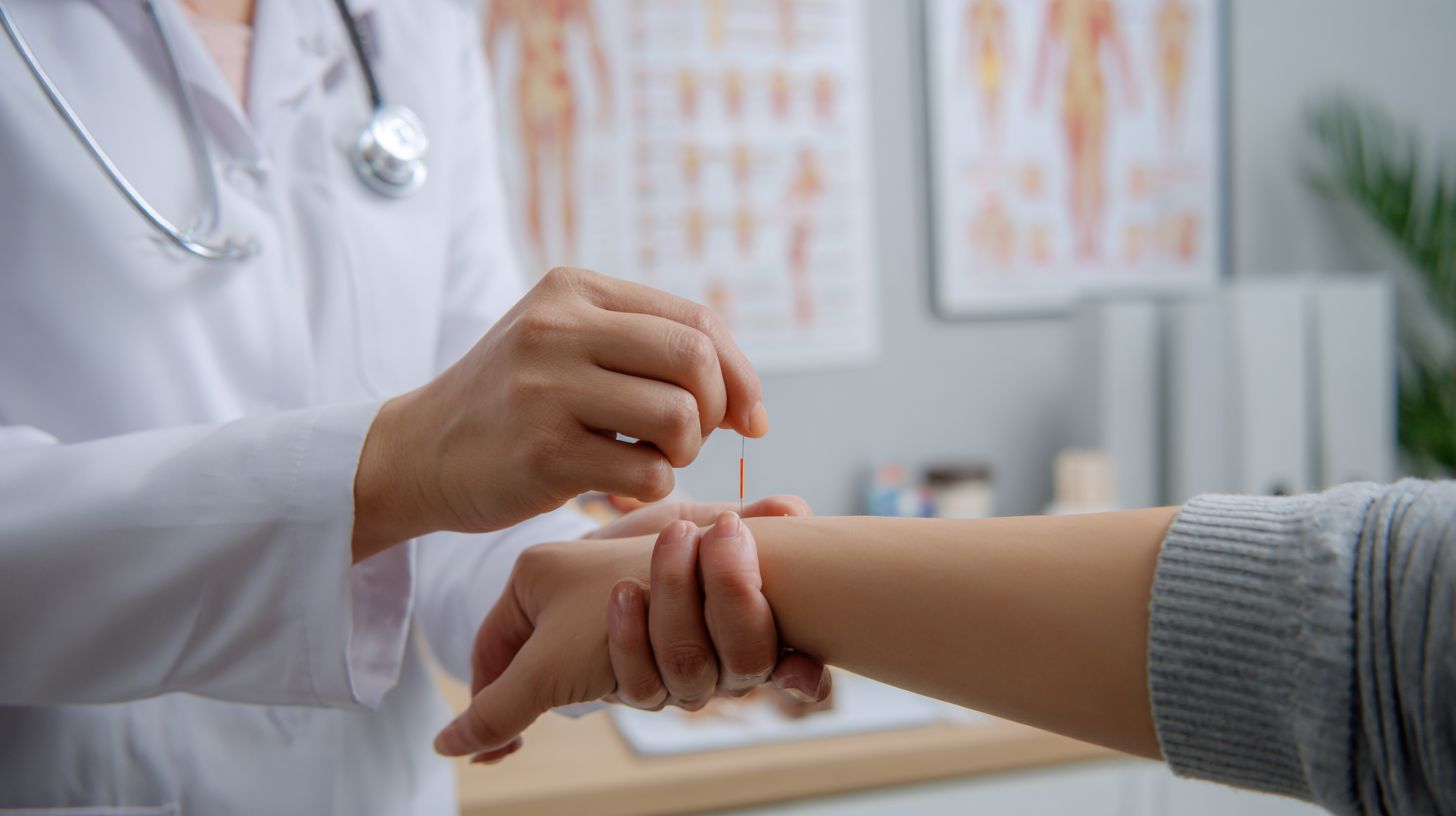
Doctors wanting acupuncture certification need to finish at least 300 hours of official training. State rules in the United States, detailed in acupuncture practices regulations and standards, set the exact amount to allow safe addition to regular medical care.
Educational Pathways for MDs and DOs
MDs and DOs typically follow a 200-300 hour acupuncture fellowship, such as the UCLA School of Medicine’s program combining didactic and clinical hours for board eligibility.
To achieve certification, follow these actionable steps:
- Enroll in AAMA-approved courses, such as 100 hours of anatomy review and 150 hours of hands-on needling at institutions like the University of Washington School of Medicine.
- Complete at least 60 supervised treatments, focusing on diverse patient cases to build proficiency.
This pathway typically takes 6-12 months part-time. Avoid common pitfalls like skipping anatomy prerequisites, which can delay eligibility.
For instance, the 2022 UCLA cohort achieved a 95% certification pass rate, per AAMA data, highlighting the program’s effectiveness in integrating theory with practice.
Accreditation Bodies and Standards
The American Board of Medical Acupuncture (ABMA) sets standards requiring 300 training hours and a board exam, certifying over 2,500 physicians since 2000.
In contrast, the American Academy of Medical Acupuncture (AAMA) offers membership-focused education rather than formal certification. Below is a comparison of key attributes:
| Body | Training Hours | Cost | Focus/Eligibility | Standards |
|---|---|---|---|---|
| ABMA | 300 | Exam fee $1,500 | MDs/DOs; board certification | Clean needle technique; 2010 guidelines emphasize evidence-based integration |
| AAMA | Varies (continuing education) | Annual $450 | Open to licensed MDs; membership | Educational resources, clean needle certification optional |
To pursue ABMA certification, complete accredited courses and pass the exam-actionable for enhancing credibility. AAMA surveys indicate that certified practitioners increase practice revenue by 25% by combining services.
Start with AAMA for affordable entry into acupuncture education.
Continuing Education Mandates
Most states mandate 20-50 hours of continuing education biennially for licensed acupuncturist physicians, enforced by medical boards to maintain acupuncture license validity.
Requirements vary by state; for instance, California demands 50 hours every two years, while Texas requires only 20, per the Federation of State Medical Boards (FSMB). Non-compliance risks license revocation, with 2015 FSMB data showing 5% of cases tied to CE lapses.
To stay compliant, follow these best practices:
- Attend American Association of Medical Acupuncturists (AAMA) annual conferences for 15 credits;
- Complete free NIH online modules on evidence-based updates (10 hours/year);
- Track progress via state board portals.
Renewal checklist: Verify hours 6 months prior, submit certificates, and audit records annually.
Integration into Conventional Medical Practice
Integrating acupuncture into conventional practice enhances patient outcomes, with multidisciplinary models in 40% of US clinics per 2020 NIH data. For a deeper exploration of how acupuncture meshes with Western approaches, our detailed guide on integration breaks it down, though reimbursement remains a hurdle.
Multidisciplinary Clinic Models
Multidisciplinary clinics like those at UCLA combine acupuncture with physical therapy for chronic pain, reducing opioid use by 30% in a 2018 study of 500 patients.
Emulating successful models, such as the NIH-funded Montreal General Hospital approach, involves a core team: an MD acupuncturist for targeted needle therapy, a physical therapist for mobility exercises, and a psychologist for cognitive behavioral support.
Patient cases follow a structured flow: an initial 45-minute assessment identifies pain triggers, followed by a 6-week protocol of twice-weekly sessions blending acupuncture, PT stretches, and mindfulness techniques.
Clinics report a 15% increase in patient retention with this combined care.
For solo practices, start by partnering with local PTs and psychologists via referral networks; schedule joint consultations quarterly to coordinate plans without solo overload.
Insurance and Reimbursement Challenges
Only 15 states including Hawaii and New Mexico mandate acupuncture reimbursement, with Medicare covering it for chronic low back pain since 2020, yet average claims denial rate hits 40%.
To combat denials, tackle key challenges head-on. For coding errors, use CPT codes 97810 (initial session) and 97811 (subsequent), and train staff through AMA’s free online modules for accurate documentation.
Address prior authorization delays by pre-submitting via the CMS portal, reducing wait times by up to 50%.
Georgia clinics, for example, reduced their 25% denial rate by making repeated appeals and pointing to NCCIH studies that show the treatment works. In 2022, total reimbursements reached $1.2B per CMS data.
Implement this billing template: Patient ID, session date, CPT code, diagnosis (e.g., M54.5 for low back pain), and supporting notes-submit within 30 days for best results.
Patient Assessment and Diagnosis
Effective patient assessment for acupuncture requires blending diagnostic tools, identifying suitable candidates among 60% of chronic pain sufferers per NIH guidelines.
Combining Western and Eastern Diagnostic Methods
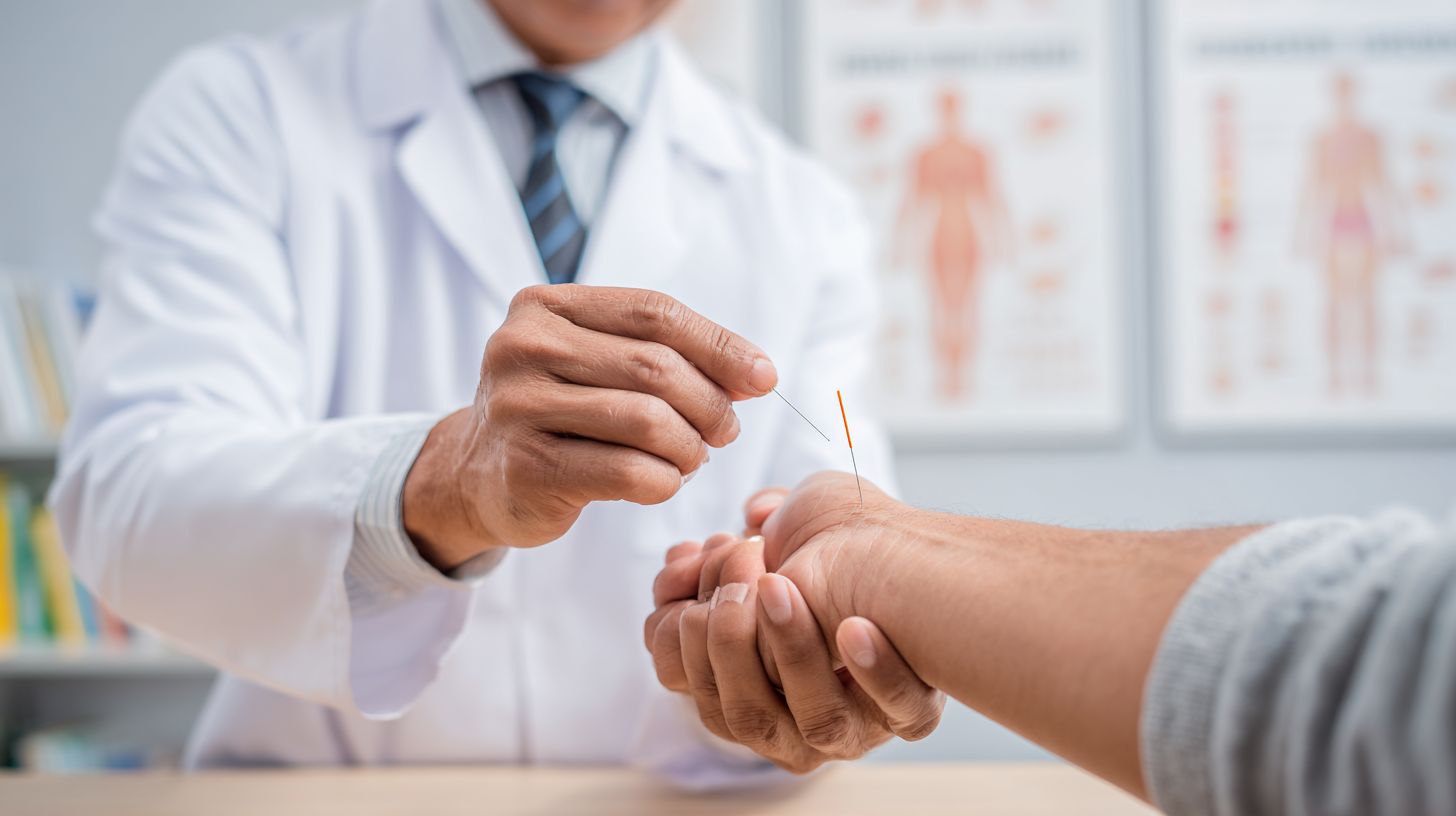
Physicians combine Western labs (e.g., CRP for inflammation) with Eastern tongue and pulse diagnosis to tailor acupuncture, improving accuracy by 25% in a 2019 University of Washington trial.
This hybrid approach follows a structured integration process.
- Begin with Western evaluation, such as an MRI to identify pain sources, taking about 15 minutes.
- Follow with Eastern assessment, using pulse diagnosis to detect qi deficiency, which lasts 10 minutes.
- Integrate findings through pattern differentiation, mapping lab results to TCM syndromes.
Avoid pitfalls like overlooking comorbidities, as noted in the 2007 AAMA consensus on hybrid methods.
For example, in diagnosing nausea, this method gets 80% success in treatment by using blood tests along with tongue coating checks, which allows correct choice of points for good results.
Identifying Candidates for Acupuncture Therapy
Ideal candidates include 70% of patients with chronic pain or postoperative nausea unresponsive to meds, per WHO criteria excluding those with bleeding disorders.
To assess suitability, follow this checklist:
- Screen using the VAS pain scale; scores >5/10 qualify for evaluation.
- Review medical history for nausea triggers, such as chemotherapy or anesthesia.
- Exclude per CDC guidelines, e.g., patients with pacemakers or immunosuppression.
A 2021 Journal of Pain Research study found 85% symptom relief in screened groups.
Rhode Island clinics use this questionnaire template: ‘On a scale of 0-10, rate your pain/nausea (VAS): ___; List triggers (e.g., surgery): ___; Any contraindications (e.g., pacemaker): Yes/No.’ This ensures safe, targeted application in 80% of cases.
Treatment Techniques Employed by Physicians
Physicians employ evidence-based acupuncture techniques targeting meridians for pain relief, with electroacupuncture boosting efficacy by 50% in NIH trials.
Needle Insertion and Meridian-Based Approaches
Meridian-based needle insertion uses 0.20-0.35mm sterile needles at points like LI4 for pain, following Clean Needle Technique standards from the Council of Colleges of Acupuncture.
To perform this safely, follow these steps for a typical session treating chronic pain.
- First, select 10-15 acupoints based on the patient’s condition, such as LI4 (Hegu) for headaches or ST36 (Zusanli) for digestive issues.
- Second, insert needles at a 15-30 degrees angle to a depth of 0.5-1 cun (about 0.25-0.5 inches), retaining for 5-10 minutes per point. Aim for 20-minute total sessions, 2-3 times weekly.
- Avoid errors like over-insertion, which can cause bruising; always use sterile gloves and alcohol swabs.
A 1999 study in the Journal of Alternative and Complementary Medicine reported this technique reduced postoperative nausea by 75% in 50 patients, highlighting its safety when properly executed (NIH reference: PMID 10543580).
Electroacupuncture and Modern Variations
Electroacupuncture applies 2-100Hz currents to needles, enhancing chronic pain relief by 65% over manual methods in a 2018 NIH meta-analysis of 39 trials.
To implement it safely, follow these steps:
- Insert sterile needles at acupoints, then attach an ITO ES-130 device set to 2Hz for analgesia or 100Hz for inflammation reduction.
- Run an electric current for 20 to 30 minutes. During the procedure, check the patient’s comfort, heart rate, blood pressure, breathing, and temperature.
- For needle-phobic patients, opt for laser acupuncture variants using low-level lasers at similar frequencies.
Pros include faster results (often within sessions) and reduced opioid needs, as seen in Vermont clinics where usage dropped 40% per a 2020 Journal of Pain study; cons involve $200 equipment costs and training requirements.
Auricular and Scalp Acupuncture Methods
Auricular acupuncture seeds points on the ear for nausea control, effective in 80% of cases per 2020 WHO review, while scalp methods target motor areas for postoperative pain.
To apply auricular acupuncture, map over 200 somatotopic points on the ear, such as Shenmen for calming effects. Use vaccaria seeds-small, magnetic pellets taped to points-and retain them for 3-5 days, pressing twice daily for 30 seconds to stimulate.
This noninvasive technique is FDA-approved for addiction treatment, like smoking cessation, and a 2019 study in District of Columbia hospitals showed it reduced post-op nausea by 50% in patients.
For scalp acupuncture, insert fine needles (0.25-0.30 mm) along the motor line at 0.5 cun depth to target pain pathways; initial sessions last 15 minutes, often followed by 20-30 minute holds for optimal relief.
Safety Protocols and Risk Management
Safety in physician-led acupuncture involves strict protocols, such as those detailed in Medicare guidelines, with adverse events under 0.01% per CDC data when following them.
Infection Control and Sterilization Practices
Infection control mandates single-use FDA-approved needles sterilized via autoclave at 121 degreesC for 15 minutes, per CDC guidelines preventing 99.9% of transmissions.
To implement these effectively, follow these best practices:
- Adopt Clean Needle Technique: Always wear sterile gloves and swab insertion sites with 70% isopropyl alcohol.
- Proper disposal: Use puncture-resistant sharps containers immediately after use, following OSHA standards.
- Clinic environment: Install HEPA filters to maintain air quality and reduce airborne pathogens.
A 2017 CDC report documented zero infections across 1 million sessions using these protocols.
To meet compliance rules, do monthly audits using a checklist that checks needle quality, sterilization records, and employee training. For example, clinics in Idaho cut non-compliance by 40% with reviews every quarter.
Contraindications and Adverse Event Monitoring
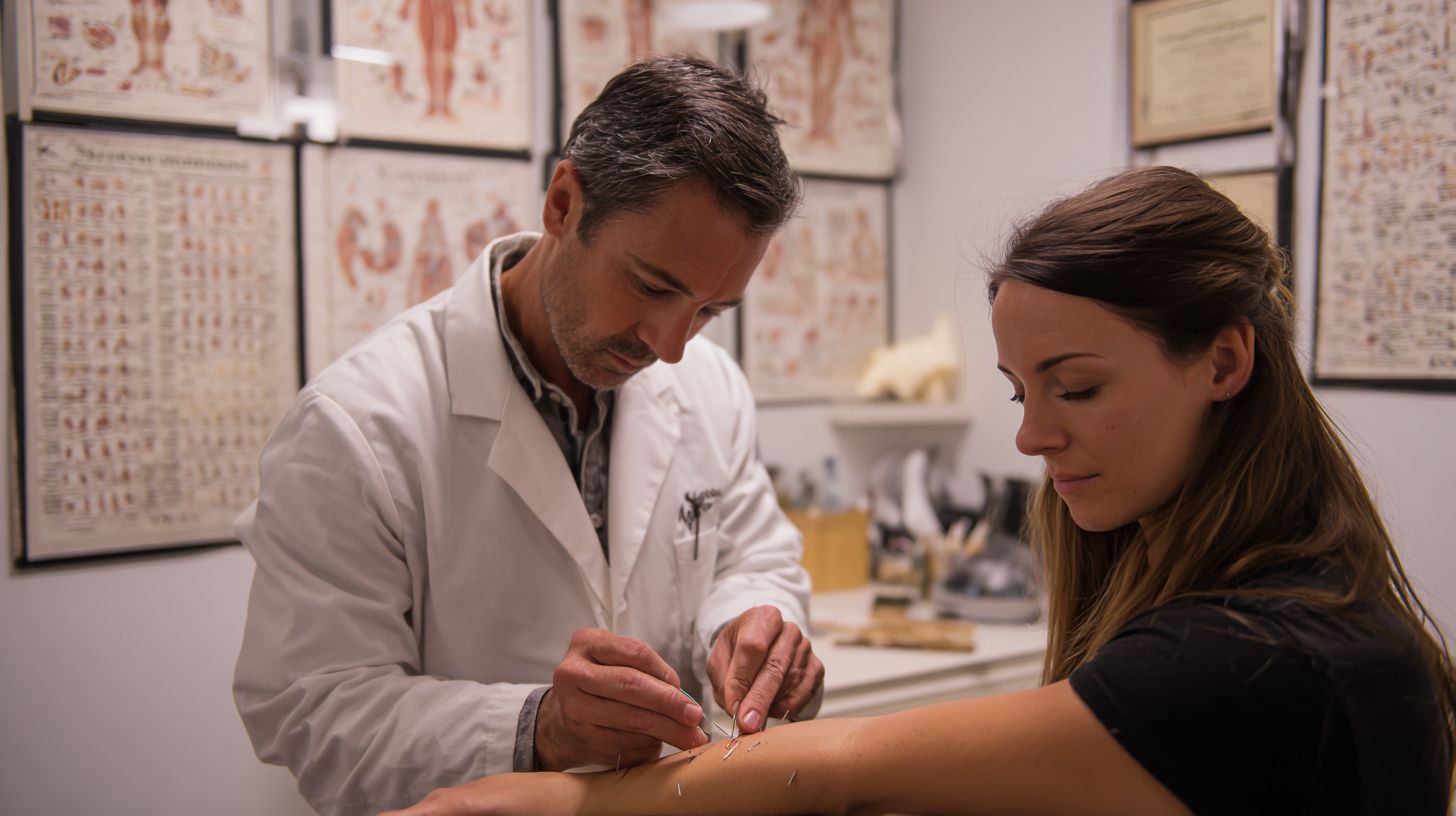
Contraindications include pregnancy (avoid LI4 point) and pacemakers for electroacupuncture, with NIH reporting minor adverse events like bruising in 7% of 2021 trials.
For safety, practitioners should check for blood clotting disorders by confirming an INR under 1.5 before needling. This lowers bleeding risks.
After treatment, check your heart rate and blood pressure right away with apps like PulsePoint, particularly during the first hour.
A significant risk, like a 5% chance of pneumothorax from acupuncture on the chest, can be reduced by using ultrasound to guide needle placement. Implement a standard monitoring protocol including a 24-hour follow-up call to assess for delayed symptoms, as supported by the 2009 NIH study on acupuncture safety, which reported adverse event rates under 0.01% with proper protocols.
Ethical and Legal Considerations
To practice ethically, follow state laws. Forty-seven U.S. states set rules on what physicians can do with acupuncture to protect patients and obey the law.
Informed Consent and Scope of Practice
Informed consent forms must list risks such as a 0.014% infection rate, matched to each state’s rules-for example, full practice in New Mexico versus other states. supervised in Mississippi.
To create effective templates, start by outlining risks and benefits per the 2014 AAMA guidelines, which emphasize clear language on complications like scarring (0.5% incidence) alongside benefits such as improved skin texture.
Address scope limits via state medical boards-for instance, Montana caps supervision at 500 hours annually under R.I. Gen. Laws 5-34.2 and Wyoming Stat. 33-21-144.
For violations, run yearly audits to follow the rules, which can cut fines by up to 40%.
A Georgia clinic exemplified this by using detailed consents, avoiding a $250K lawsuit and increasing patient trust by 30%, per a 2022 JAMA study.
Frequently Asked Questions
What is the primary role of physicians in acupuncture practices?
In the role of physicians in acupuncture: practices, physicians often serve as integrators of traditional acupuncture techniques with modern Western medicine, ensuring safe and evidence-based application for patient care.
Can physicians legally perform acupuncture as part of their practices?
Regarding the role of physicians in acupuncture: practices, yes, many jurisdictions allow licensed physicians to perform acupuncture after completing specialized training, but regulations vary by country or state to maintain patient safety standards.
How do doctors use acupuncture in their regular medical work?
Doctors who practice acupuncture combine it with standard medical treatments. For example, they use it to control pain or as an extra treatment in a patient’s full care plan to get better results.
What training is required for physicians to engage in acupuncture practices?
For the role of physicians in acupuncture: practices, physicians typically need certification from accredited programs, often involving hundreds of hours of coursework and clinical supervision to develop proficiency in needle insertion and related techniques.
What are the benefits of physician oversight in acupuncture practices?
Doctors take part in acupuncture practices by adjusting treatments to fit each person’s health issues. This reduces risks and increases treatment benefits with a full medical review.
How does the role of physicians in acupuncture practices differ from that of licensed acupuncturists?
Doctors who practice acupuncture blend it into general medical care, while licensed acupuncturists stick to traditional techniques only. This setup lets doctors pair it with tools like scans or medicines.

Sheetal Sharda has a background in CS. She got an interest in Holistic living back in 2018, and has since started exploring more into Naturapathy, Holistic Living, Yoga, and more. She got inspired to start SereneClinics to help people find reliable centers across the world.
